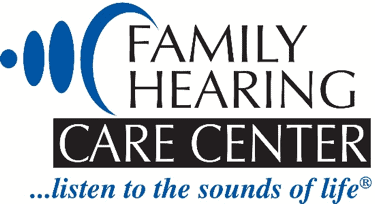
Understanding Noise Induced Hearing Loss
Loud noise is a common cause of hearing loss. We navigate varying types and levels of noise throughout the day. From traffic to listening to music, cleaning, cooking, and talking on the phone; noise is part of everyday life. You may be surprised to learn that there are everyday activities and settings you navigate that are hazardous for hearing health. It is important to be aware of your exposure to loud noise to practice ways you can protect your hearing health. Pracifing safety measures can prevent noise induced hearing loss.
What causes noise induced hearing loss?
According to the World Health Organization (WHO), over 1 billion people are at high risk of developing noise induced hearing loss. One time or regular exposure to loud noise can permanently damage the sensory cells in the inner ear. There are thousands of these cells in the cochlea and they play a critical role in how sound is processed. These cells convert incoming soundwaves into electrical signals that get sent to the brain. The brain continues processing these cells, assigning meaning to them which allows us to understand what we are hearing.
Loud noise can sensitize and weaken sensory cells, reducing their capacity to effectively process soundwaves. This results in the brain receiving less auditory information, causing hearing loss. Sensory cells in the inner ear do not regenerate adn there are also no ways to repair damage they experience. This means that any injury or damage is permanent, resulting in chronic noise induced hearing loss.
What are common sources of loud noise?
Sound is measured in units known as decibels (dB) and noise that exceeds 85dB is considered hazardous for hearing health. There are many types of noises and activities that you may encounter regularly that reach or exceed this level. A few common sources of loud noise include:
- Appliances/tools: various types of household appliances that you may use daily produce noise near or above 85dB:
- blenders, food processors – up to 100dB
- power tools: drills, chainsaw etc. – up to 110dB
- lawn mower, leaf blower, vacuum cleaner, hair dryer: up to 90dB
- Social life: social activities and environments tend to be active and noisy. Examples include:
- parties, loud restaurants, bars: 85-90dB
- attending a game in a sports arena or concert in a stadium: up to 110dB
- Work life: the Hearing Health Foundation estimates that over 22 million people are exposed to hazardous noise levels at work. Noisy workplaces include restaurants, transportation hubs, construction, music venues etc.
- Electronic devices: another common source of loud noise is listening to audio from personal devices. This includes using earbuds or headphones to listen to music or podcasts from your phone. This can get up to 100dB at the highest volume setting.
These common sources of loud noise highlight the importance of practicing safety measures and protecting hearing health.
How can I protect my hearing health?
Noise induced hearing loss is totally preventable. Useful safety measures you can practice include:
- Apply 50-60% rule: experts recommend using the 50-60% rule which describes keeping your device at 50% – 60% of the maximum volume.
- Measure sound: it is important to know how loud your devices can get and the noise levels you are exposed to. You can measure noise levels by downloading an app that measures decibels.
- Wear hearing protection: this includes headphones, earbuds, earmuffs etc. which provide a physical barrier for the ears, reducing the amount of loud noise you absorb. Carrying these items and wearing hearing protection when moving through spaces that are noisier is a great way to protect your hearing.
- Use noise canceling headphones: noise canceling technology is designed to minimize background noise. This delivers sharp sound quality and prevents you from having to turn up the volume when moving through noisier environments, allowing you to listen to audio more safely.
- Take breaks: your ears and brain are constantly absorbing and processing sound. Taking 5-10 minute listening breaks throughout the day gives your auditory system time to rest and recuperate.
- Test hearing: getting your hearing tested regularly allows you to track your hearing health. This enables you to identify any changes you may experience early, supporting early intervention.
Implementing these strategies can significantly protect your hearing health, preventing noise induced hearing loss. Contact us today to learn more about the resources adn technologies that are available to support your hearing health.
